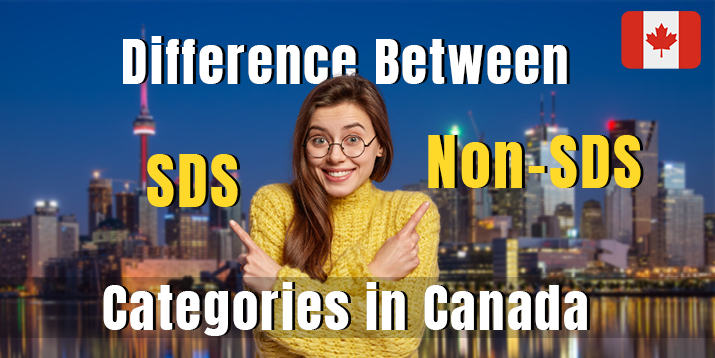


When applying for a visa, you could become perplexed by phrases like SDS and Non-SDS if you intend to study in Canada. SDS, which stands for Student Direct Stream but was previously known as the Students Partner Program, is available to citizens of a few different nations, including Brazil, India, and others. Non-SDS is a standard visa application procedure for short-term stays in Canada for jobs, studies, and immigration. No matter where they are from, it is accessible to all foreign travelers. The comparative study between SDS and Non-SDS will be addressed in this blog.
SDS visa category
Previously known as the Student Partnership Program, the Student Direct Stream (SDS) (SPP). The effort comes from Canadian Immigration Services. If students desire to study in Canada, their visa applications will be processed promptly and directly under the SDS strategy. However, you can only do so by using an online platform to submit your SDS application. In addition, to be eligible for the SDS category, students must meet several standards outlined by Immigration, Refugees, and Citizenship Canada.
Non-SDS visa category
A broad category for visa applications to study in Canada is Non-SDS. Candidates who are unable to meet the SDS requirements have an opportunity to apply using this strategy. As further documentation may be required, the requirement will change as well.
The key difference
While Non-SDS is a standard visa application for everyone to work, study, or move to Canada, SDS (Student Direct Stream) is an express-entry visa application for students to pursue their studies there. The main difference between SDS and Non-SDS visa applications is this. Additionally, SDS is only relevant to particular countries like China, India, Peru, and others, but Non-SDS applies to all countries.
What should you choose between the two?
Now that you know the differences between SDS and Non-SDS, let's look at the key arguments in favor of the SDS strategy for visa applications.
-
Less Documentation: Candidates for the SDS category just need to submit several financial eligibility documents. At the same time, there are more documents in the Non-SDS approach.
-
Fast Process: Compared to Non-SDS, the SDS technique is more streamlined and straightforward. The period is approximately 45 days.
-
Higher Success Ratio: The SDS program has a higher success rate than non-SDS programs. As long as the students meet the prerequisites for the SDS program, the program is more appropriate for them. The program is ideal for those looking to study in Canada comfortably and obtain a Canada student visa without spending a lot of time and effort.
Eligibility Criteria for SDS Canada
-
A permanent residency permit from one of the nations covered by the SDS Canada visa policy is the primary prerequisite for an SDS visa.
-
The Designated Learning Institute must issue acceptance letters to all international students (DLI).
-
The payment of first-year tuition is a requirement of the SDS Canada Visa for international students. As evidence for this, a receipt from the DLI is needed. To prove that the transaction was made from the student's account to the appropriate university account, the student must additionally show the bank receipt.
-
Another prerequisite for SDS Canada is a 10,000 CAD Guaranteed Investment Certificate (GIC) for Indian students. Following the purchase of a GIC, the certificate is delivered along with an Investment Directions Confirmation letter and a letter of attestation. Until the student arrives in Canada, the banks hold the monies in the investment or student account. By confirming the students' identities once they have arrived in Canada, he/she can release the funds.
-
Fluency in the English language is a prerequisite for every phase of your study abroad experience. During the processing of SDS files, Canada also requests the same. For this purpose, only the IELTS scorecard is taken into account.
Documents required for SDS visa application
-
Official academic transcripts that include grade 12 reports. Candidates must have earned an overall grade point average in undergraduate courses of at least 55%.
-
Undergraduate or graduate degree. To enroll in postgraduate courses, candidates must have a minimum GPA of 50% or above.
-
Purpose Statement
-
IELTS scores for English proficiency must be at least 6.0 for UG and 6.5 overall for PG.
-
Letters of acceptance (LOA) from SDS-eligible colleges.
-
Guaranteed Investment Certificate (GIC) to meet living expenses of an estimate $10,000
-
Digital photographs
-
Previous job experience (if any)
-
Receipt of payment of the tuition fee of 1 year
-
Evidence of required medical testing
-
A $150 visa application fee (INR 11K approx)
Final words
Getting a student visa to Canada is a challenge. Proper completion requires adequate time, work, and training. Do you plan to attend school in Canada? Meet the staff who will make it easier for you to obtain a student visa for Canada and offer you the most support. Our trustworthy Canada Student Visa experts are available to assist you at any moment.
today and make your
experience easier?


